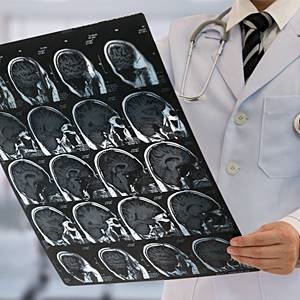
For too long, we have associated strokes with the older generation, but time and time again we’re reminded that it is not an old woman’s disease. While it’s true that a majority of strokes still happen to people who are over the age of 65, it doesn’t happen to them only.
Let’s quickly take a look at the stats. Almost 224 people will have a stroke daily, meaning that nearly 10 people in the country will have a stroke every hour. And 110 people die from strokes every day (in SA). Sounds a bit like the end of the world, but the good news is that almost 80% of all heart attacks and strokes are preventable (we’ll get to that in a minute).
What is a stroke?
At its core, a stroke happens when the brain’s blood supply has been interrupted and there are many different types of strokes. According to the Heart And Stroke Foundation, parts of the brain stop receiving oxygen and nutrients because one of the arteries carrying these becomes blocked or bursts.
“During a stroke, parts of the brain may be temporarily or permanently damaged, causing the person to experience the symptoms of stroke,” The Heart and Stroke Foundation writes. “It is very similar to what happens in a heart attack, which is why it’s often referred to as a ‘brain attack’.”
Younger people and strokes
Strokes can actually happen to anyone of any age. This includes young adults, teenagers, children, newborns and in some instances – even unborn babies! But let’s talk about strokes that happen in adults under the age of 45 for now.
A 2017 study published in the JAMA Neurology Journal found that, in the United States, stroke hospitalisation rates for acute ischemic strokes in individuals aged between 35 and 44 years had gone up exponentially between 2003 and 2012.
READ MORE: 7 Serious Stroke Symptoms You Should Never Ignore
The study found that the rates among men went up by 41,5% and by 30% for women.
“The identification of increasing hospitalisation rates for acute ischemic stroke in young adults coexistent with the increasing prevalence of traditional stroke risk factors confirms the importance of focusing on prevention in younger adults,” the study concluded.
The risk factors for stroke include smoking cigarettes, hypertension, excess body weight, high cholesterol, diabetes, low intake of vegetables and fruit, being physically inactive and drinking alcohol.
Why are more young people having strokes?
A 2019 research essay published in the South African Medical Journal notes that the overall rate of stroke-related mortality is on the decline, globally. But it also notes that while this is the case, the absolute number of people with stroke, stroke survivors and people with stroke-related disabilities are ‘high and increasing’.
“Men have a higher incidence of stroke than women at younger but not older ages, with the incidence reversed and higher for women at ages above 75 years,” the paper says.
While mounting evidence has pointed to the fact that more and more young people are having strokes (more than before), it’s still not extremely clear why this is the case – but most of it points back to the risk factors.
In an interview with science magazine Scientific American, Ralph Sacco, president of the American Academy of Neurology, outlined the key risk factors that are probably affecting young people the most.
“There are concerns about obesity, diabetes and physical inactivity having a greater impact on younger stroke victims,” he said. “Drug use may also be another factor.”
But younger people recover better, apparently
According to a paper published by Stanford Medicine, younger people tend to recover better from strokes than people over 65 years. This is often the case if the young person doesn’t have any other health conditions that could interfere with stroke recovery.
“Doctors believe that improved recovery may be connected to the younger brain’s natural ability to use undamaged brain circuits to take over the functions of damaged circuits,” the paper says.
READ MORE: “I Survived A Stroke — And It Scared Me Enough To Change My Lifestyle”
“In older patients, that brain plasticity may be reduced, but recovery does continue.”
Reducing your risk of getting a stroke all leads back to the risk factors. So things like increasing your intake of fruits and vegetables, quitting smoking, limiting alcohol consumption and becoming physically active all go a long way in reducing your risk.
How to tell if someone is having a stroke
Being able to identify if someone is having a stroke can literally save that person’s life. Literally! When it comes to a stroke, every second counts. Even 15 minutes can be too long in some cases. The more time that goes by without medical attention, the higher the chances of permanent disability, brain damage and in some instances, death.
Here’s the universal way of remembering the symptoms of a stroke and responding accordingly.
F. A. S. T
F = Face drooping (ask the person to smile, if the smile is uneven or lopsided – it could be a stroke).
A = Arm weakness (ask the person to raise both arms, if the one arm drifts downwards – it could be a stroke).
S = Speech difficulty (ask the person to repeat a simple sentence, if the speech is slurred – it could be a stroke).
T = Time to call for medical help and keep a note on the exact you noticed the symptoms happening. (If any one of the symptoms mentioned above is present, even if they go away, call for medical help and get them to a hospital as quickly as you can.)
Image credit: iStock




 Publications
Publications
 Partners
Partners















